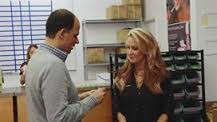In the first segment of this episode, Marcus travelled to Silicon Valley to visit Christina of Farmgirl Flowers. Christina founded the company in 2010 and has built a very successful eCommerce flower business that employs 30 people. She buys only domestic flowers and minimizes waste by offering just one daily arrangement.
Despite Farmgirl’s rapid growth, Christina has not been successful in her quest to raise Venture Capital to fuel future growth. She feels this was because she’s a woman, and she said it is difficult, if not impossible, for women to raise capital. Here’s when the fireworks began.
Marcus suggested that it had nothing to do with the fact that she’s a woman. He pointed out that he knows many women who fund and get funded. Marcus also showed her how her mistake in calculating her gross margins played a part in the no-funding decisions. She had been significantly understating her margins by not calculating them correctly.
Christina placed a value of $20 million on Farmgirl. She was comparing her company’s valuation to some well-funded VC-backed competitors that had raised millions of dollars. Marcus placed the value at just $5 million (about 1X annual sales) and wouldn’t budge.
As the “negotiation ” unfolded, it became obvious that Christina was only concerned with the money and didn’t seek Marcus’s value-add potential. She also said she didn’t want to give the appearance that her company was “saved by a man”. I made a note just as the meeting began……. if I were Marcus, I would have set-up a meeting for Christina with a woman investor, charged a transaction fee, and hopped on a plane to go back home.
No deal here.
The second segment was a follow-up story on My Big Fat Greek Gyro (renamed The Simple Greek). They had adopted a “Chipotle-like” business model and were now selling franchises. Marcus estimated that they could have 500 franchises within five years.
Marcus had to rattle a few cages to a) start receiving the royalties due him and to b)to get the original owners (who now owned 45% equity) more engaged in running the business.
Marcus is a very good cage-rattler. This could be a huge success.

